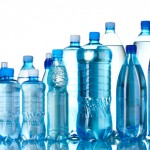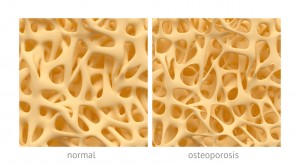Hyponatremia, low sodium levels and the risk of drinking too much water
 Hyponatremia is a condition where a person has low sodium levels, which can increase the risk of drinking too much water. Sodium is an electrolyte and it helps regulate fluid levels in the body.
Hyponatremia is a condition where a person has low sodium levels, which can increase the risk of drinking too much water. Sodium is an electrolyte and it helps regulate fluid levels in the body.
An underlying medical condition can be responsible for hyponatremia. This underlying medical condition can be that of drinking too much water, which causes sodium to become low and fluid levels to become high. When we intake high amounts of water our cells begin to swell, which can lead to health complications.
Treatment for hyponatremia focuses on treating the underlying condition, and you will also need to cut back on the amount of water you consume.
How much sodium and water does the body need?
The typical American diet loads us up with sodium, so it may seem strange that a person can actually have low sodium – but it is possible if consumption of water is high. Recommended sodium intake is 2,300 mg a
day, or 1,500 mg a day if you are over the age of 51. And yet, just a teaspoon of salt contains 2,325 mg, which alone puts you over the daily recommendation.
 Water is also important for health; it makes up a large part of the body. Water helps keep the body functioning, but even something so essential can be overconsumed. Because we are constantly losing fluids through sweating, crying and even breathing, it’s important to replenish it. It’s advised that men consume 13 cups – or three liters – of water a day and women should stick with nine cups, or 2.2 liters.
Water is also important for health; it makes up a large part of the body. Water helps keep the body functioning, but even something so essential can be overconsumed. Because we are constantly losing fluids through sweating, crying and even breathing, it’s important to replenish it. It’s advised that men consume 13 cups – or three liters – of water a day and women should stick with nine cups, or 2.2 liters.
As for what constitutes too much water, well, every person is different. Factors like athletic ability and time in which the water is consumed can play a role in drinking too much.
How to know if you drank too much water
If you’re concerned that you’re drinking too much water, there are signs you can look for. For example, your urine is a good indicator. If your urine is completely clear, that is a sign you’re overly hydrated. Additionally, if you drink water when you’re not thirsty, it can lead to overconsumption as well. Lastly, if you feel bloated or have actually put on weight based on how much water you consumed, that also indicates you drank too much.
Hyponatremia causes
Normal sodium levels in the body should range from 135 to 145 milliequivalents per liter (mEq/L). When sodium levels drop below 135 they are considered too low. Causes of hyponatremia are:
 Medications like diuretics, antidepressants and pain killers
Medications like diuretics, antidepressants and pain killers- Heart, kidney and liver problems
- Syndrome of inappropriate anti-diuretic hormone (SIADH) – water becomes retained instead of being expelled
- Chronic, severe vomiting or diarrhea
- Drinking too much water
- Dehydration
- Hormonal changes
- Ecstasy – a psychoactive drug in the amphetamine class
Hyponatremia symptoms
Signs and symptoms of hyponatremia include:
- Nausea and vomiting
- Headache
- Confusion
- Loss of energy and fatigue
- Restlessness and irritability
- Muscle weakness, spasms or cramps
- Seizures
- Coma
Hyponatremia treatment
Hyponatremia is treated by focusing on the underlying cause of the condition. If hyponatremia is caused by fluid intake, it is advised to cut back on water consumption. A doctor may also change the use of diuretics in order to maintain sodium levels.
If hyponatremia is more severe, then more aggressive action must take place. This can involve the use of intravenous fluids, which provide sodium or medications to manage symptoms associated with hyponatremia.
Hyponatremia prevention
There are many ways to prevent hyponatremia from affecting you. Prevention tips include:
 Treat conditions that can contribute to hyponatremia, like adrenal gland insufficiency.
Treat conditions that can contribute to hyponatremia, like adrenal gland insufficiency.- Educate yourself and become aware of health conditions that may increase the risk of hyponatremia.
- Be mindful when partaking in high-intensity activities – athletes are at high risk of hyponatremia due to excessive sweating and consuming too much water.
- Replace water with sport drinks during high-intensity activities as they can replace essential electrolytes.
- Drink water in moderation.
4 ways you’re drinking water wrong
Staying hydrated is essential for good health. A large percentage of our body is made up of water so keeping that supply full is important. It seems easy enough that to stay hydrated you should drink, but you could be hydrating yourself incorrectly. Continue reading…
-
The Mix N Match Workout
People love routine. There’s comfort in doing the same things and
-
Putting Mesothelioma Into Perspective
Mesothelioma is an uncommon form of cancer, usually associated wit
-
Lose The Weight The Healthy Way
High-protein diets may not be as bad as they say after all especially
-
Eat Properly and Reduces Weight
YOU COUNT CALORIES. Generally recognized rules of weight loss says:
-
No Longer Struggle To Lose Weight Anymore
When you lose weight and keep it off, yo
-
IBS vs. gastroenteritis (stomach flu): Causes, complications, and treatment
Irritable bowel syndrome (IBS) and gastroenteritis (also known
- DON'T MISS
- The Truth Is Not In Their Drug
- Diet Food Delivery Services
- Obese vs. Overweight: 6 Ways To Tell The Difference
- The Ego Diet
- How to Lose Weight, Effective Techniques or Tips for Weight Loss
- The Benefit Of Weight Loss For Women Through Boot Camp Training
- Effect and ineffective methods to tame hot flashes without hormones
- 5 Key Reasons Why Fad Diets Fail, and 5 Proven Alternatives to Help You Lose Weight Easily, Naturally, and Permanently
- 3 Questions to Ask Yourself for Successful Weight Loss
- Big Buts Sabotage Weight Loss Health And FitnessPart 5 0f 12




